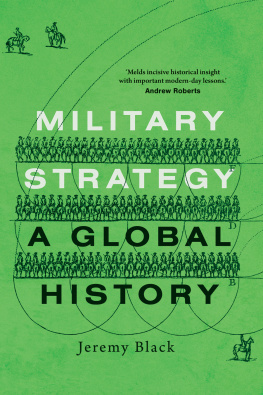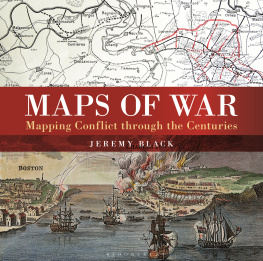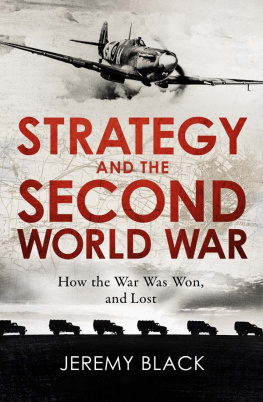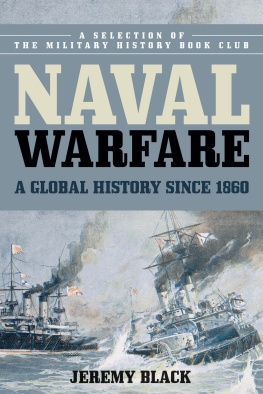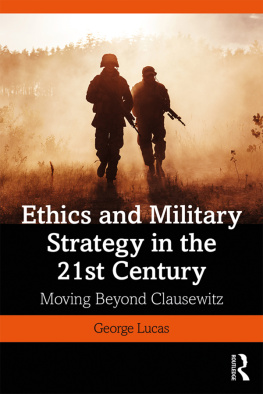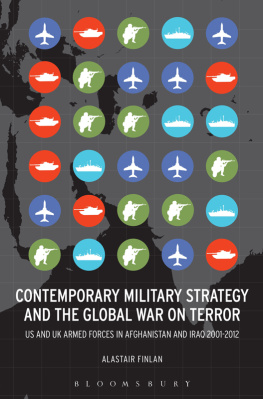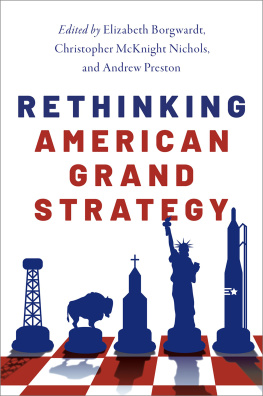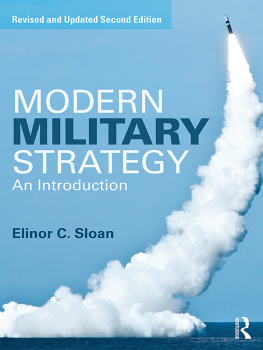PLOTTING
POWER
PLOTTING
STRATEGY IN THE EIGHTEENTH CENTURY
POWER
JEREMY BLACK

This book is a publication of
INDIANA UNIVERSITY PRESS
Office of Scholarly Publishing
Herman B Wells Library 350
1320 East 10th Street
Bloomington, Indiana 47405 USA
iupress.indiana.edu
2017 by Jeremy Black
All rights reserved
No part of this book may be reproduced or utilized in any form or by any means, electronic or mechanical, including photocopying and recording, or by any information storage and retrieval system, without permission in writing from the publisher. The Association of American University Presses Resolution on Permissions constitutes the only exception to this prohibition.
The paper used in this publication meets the minimum requirements of the American National Standard for Information SciencesPermanence of Paper for Printed Library Materials, ANSI Z39.481992.
Manufactured in the United States of America
Library of Congress Cataloging-in-Publication Data
Names: Black, Jeremy, 1955- author.
Title: Plotting power : strategy in the eighteenth century / Jeremy Black.
Other titles: Strategy in the eighteenth century
Description: 1st edition. | 1st edition. | Bloomington : Indiana University Press, [2017] | Includes bibliographical references and index.
Identifiers: LCCN 2017000809 (print) | LCCN 2017013816 (ebook) | ISBN 9780253026798 (e-book) | ISBN 9780253026088 (cloth : alk. paper)
Subjects: LCSH: Military history, Modern18th century. | Strategy. | International relationsHistory18th century. | World politics18th century.
Classification: LCC D214 (ebook) | LCC D214 .B574 2017 (print) | DDC 355/.033509033dc23
LC record available at https://lccn.loc.gov/2017000809
ISBN 978-0-253-02608-8 (cloth)
ISBN 978-0-253-02679-8 (e-bk.)
1 2 3 4 5 22 21 20 19 18 17
For
ANDREW THOMPSON
Friend and Colleague
CONTENTS
PREFACE
STRATEGY IS A TERM MUCH DEBATED NOW. INDEED, IN THE West, helping both to provoke and to focus this debate, there is a sense that strategy is in some way a lost art and a repeated argument to that effect. This sense reflects a crisis of confidence as a result of repeated setbacks, or at least serious difficulties, for Western forces in Iraq and Afghanistan in the 2000s and 2010s, and the linked problems for Western goals. The rhetoric and associated disquiet about absent or flawed strategy rose to a hitherto unmatched height in 2015. This was specifically in response to the ISIS terrorist attack on Paris and to the more general imbroglio concerning Western policy toward Syria and indeed the Middle East as a whole.
The rhetoric and disquiet also reflected a more general concern in the West in the 2000s and 2010s about drift and drift in the case of the conception and implementation of what was variously described as policy and strategy. The confused and largely unsuccessful response to Chinese and Russian expansionism was an aspect of this disquiet. In this context of concern and the response to concern, the term strategy was much employed and not always in an illuminating fashion. That itself was an instructive comment on the vocabulary of strategy. So also was the extent to which commentators focused on differences and tensions arising from contrasting goals between the powers, notably Russia and the Western powers. These contrasts underlined the extent to which alliances and would-be alliances entailed commitments and possibilities in terms of goals and means that involved the pressures and problems of cooperation. To offer an account of strategy as a military activity that does not take adequate note of the international context and its consequences is evidently flawed, and this is also true for ISIS.
There is no reason why the same should not be the case for the past. Indeed, the use of the present to guide and equip questions and thoughts about the past is an integral aspect of assessing the historical dimension of strategy. Modern terms have to be employed to provide a twenty-first-century appraisal of what happened. As long as ahistorical perspectives are avoided, this is a rewarding approach and in practice, a necessary one.
This book reflects many years working on the eighteenth century, on both its military history and its international relations. It also arises from my concern that much work on the period, although very valuable, fails to engage explicitly with the issue of strategy and that despite the significance of strategic practice and related ideas.
The book proceeds from an introduction and a general chapter, through a series of case studies, to a conclusion. The case studies are contextualized in terms of shifts across the century. Much of the book will be devoted to those case studies. For each one, there will be a discussion of strategic culture and practice and, specifically, of the degree to which it is appropriate to use the terms of strategy. The case studies are chosen to illustrate the range of strategy and also to draw attention to key issues, notably the changing nature and importance of strategic culture. , focuses on the early use of the term strategy which was developed in France.
In thinking about this issue, I have benefited from teaching military history at Exeter for many years and would like to thank the students involved. While writing this book, I have profited from opportunities to give the Changing Character of War program at Oxford Annual Lecture in 2016 and to speak at the New York Historical Society, the University of North Texas, William Paterson University, and the 2016 Gunther E. Rothenberg Seminar in Military History, to the Foreign Policy Research Institute, to a Madrid conference on Spain in 16601724, to Herv Drevillons seminar at the Sorbonne, at Oundle School, and for the Royal Danish Defense Academy, and from the comments of Paola Bianchi, Stan Carpenter, Marco Cesa, Michael Clemmesen, Alan Forrest, Bernard Gainot, Richard Harding, Enrique Garca Hernn, Beatrice Heuser, Lothar Hbelt, Tim May, Martin Robson, Kaushik Roy, Rick Schneid, Dennis Showalter, Don Stoker, Heiko Whenning, and an anonymous reviewer on an earlier draft. Conversations with Bob Citino, Stephen Conway, Enrique Garcia Hernn, Luigi Loreto, Oliver Letwin, Eduardo De Mesa, Paul Newton, and Harold Tanner have been most helpful. Advice from Jonathan Abel, Michael Axworthy, Anne Bandry, Michael Bregnsbo, Tony Claydon, Tony Cross, Huw Davies, Simon Dixon, Herv Drevillon, John France, Iain Hampsher-Monk, Gregory Hanlon, Angus Hawkins, Jan Hoffenaar, Colin Jones, Andrew Lambert, Michael Leggire, Nick Lipscombe, Noel Malcolm, Alexander Mikaberidze, Roger Morris, Jeremy Noakes, Ciro Paoletti, Ryan Patterson, Robert Pocock, Jos Miguel Pereira Alcobio Palma Sardica, Satsuma Shinsuke, Tassapa Umavijani, and Peter Ward is also much appreciated. None of them is responsible for any mistakes. I am most grateful to Her Majesty the Queen, the Duke of Bedford, the Earl of Harrowby, Earl Waldegrave, Lady Lucas, Sir Hector Monro, and Richard Head for granting permission to consult their collections of manuscripts.
It is a great pleasure to dedicate this book to Andrew Thompson, a major scholar on the British empire, a colleague, and a sage and supportive friend.
LIST OF ABBREVIATIONS
Add.Additional Manuscripts
AE.Paris, Ministre des Relations Extrieures
AN.Paris, Archives Nationales
Next page


